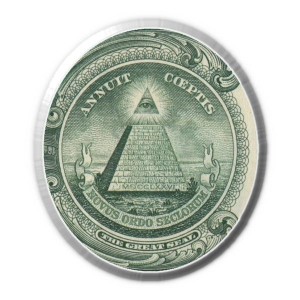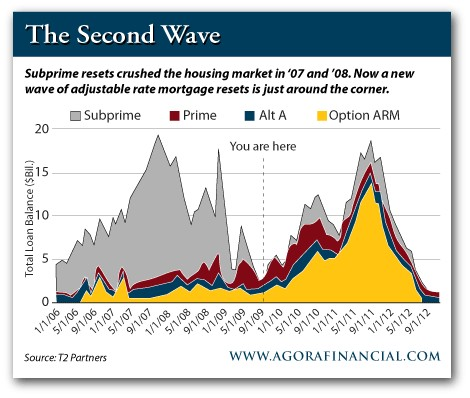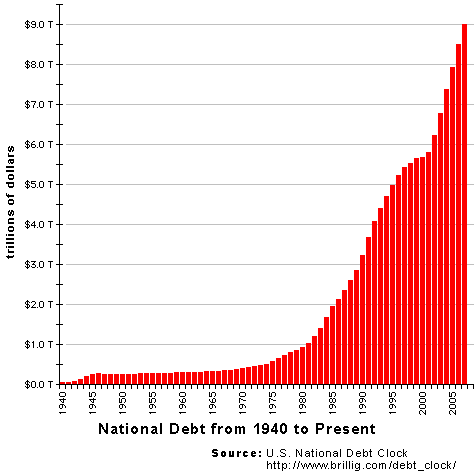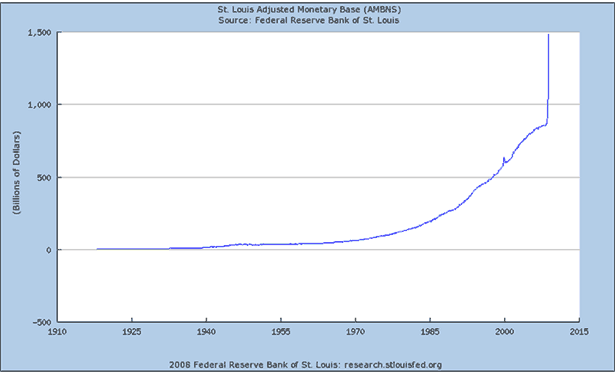Reading - Ponzi Scheme: The Federal Reserve Bought Approximately 80 Percent Of U.S. Treasury Securities Issued In 2009 -
 No, the headline is not a misprint. According to CNBC, the Federal Reserve bought approximately 80 percent of the U.S. Treasury securities issued in 2009. In other words, the Federal Reserve has been gobbling up the massive tsunami of U.S. government debt that has been created over the past year. This is absolutely unprecedented, and it is yet another clear indication that the U.S. financial system is on the verge of a major economic collapse.
No, the headline is not a misprint. According to CNBC, the Federal Reserve bought approximately 80 percent of the U.S. Treasury securities issued in 2009. In other words, the Federal Reserve has been gobbling up the massive tsunami of U.S. government debt that has been created over the past year. This is absolutely unprecedented, and it is yet another clear indication that the U.S. financial system is on the verge of a major economic collapse.
You see, the Federal Reserve is not part of the federal government. In fact, the Federal Reserve is about as "federal" as Federal Express is.
The Federal Reserve is a private bank owned and operated for profit by a very powerful group of elite international bankers.
It is this private central bank that controls the money supply and the issuance of currency in the United States.
When the U.S. government need to borrow more money (which happens a lot) they go over to the Federal Reserve and they ask them for some more green pieces of paper called Federal Reserve Notes.
The Federal Reserve swaps these green pieces of paper for pink pieces of paper called U.S. Treasury bonds.
Now normally the Federal Reserve takes these U.S. Treasury bonds and they sell them all to other buyers.
But in 2009 there were not nearly enough buyers.
So in 2009 the Federal Reserve sold itself about 80 percent of this debt.
This is even being admitted on CNBC. The video below is from January 8th, and at the 1:45 mark CNBC anchor Erin Burnett drops this bombshell along with a comment about how it is a Ponzi scheme....
So why is it a Ponzi scheme?
Well, basically the Federal Reserve is creating money out of nothing, loaning it to the U.S. government and then collecting interest on the loan.
That is nice work if you can get it.
But also, this intervention by the Federal Reserve is keeping interest rates on U.S. Treasury bonds artificially low.
In a true "free market" situation, the interest rates on U.S. treasuries would rise to reflect the rapidly declining economic situation in this nation.
Due to the massive explosion in the size of the U.S. government debt and due to the very weak U.S. economy, interest rates on U.S. treasuries should have shot through the roof by now. Rational investors would normally require an increased return for the increased risk that U.S. treasuries now represent.
But that is not happening.
Instead when there are no buyers for U.S. treasuries at current interest rates, the Federal Reserve just steps in and buys up all the excess bonds that need to be purchased.
But in a normal free market situation, interest rates would rise on U.S. treasuries until they would be attractive enough for investors to buy them all.
However, that would create some huge problems.
If the U.S. government was not able to borrow all of the money it wanted to at artificially low interest rates, the results would be absolutely disastrous.
Much higher interest rates on U.S. government debt would cause the U.S. federal budget deficit to absolutely explode. Interest rates on everything else throughout the economy would also skyrocket. As mortgage rates climbed dramatically, the housing market would completely collapse. The U.S. economy would be totally in flames.
But for now (and this situation cannot last forever) the Federal Reserve is keeping interest rates artificially low by lending the U.S. government as much money as it wants at extremely low interest rates. Of course the Federal Reserve is making an insane amount of money out of the arrangement, so it is working out quite nicely for them as well.
But by essentially "printing" a flood of cheap money for the U.S. government to borrow, the Federal Reserve is ultimately going to end up destroying the value of the U.S. dollar.
Every fiat currency throughout history has always ended up losing its value, and that is exactly what is going to happen this time too. The only way to protect the buying power of your money is to put it into something that will hold value (like gold or silver). Your dollars are never going to be worth more than they are today.
The actions taken by the U.S. government and the Federal Reserve have guaranteed the demise of the U.S. dollar. At this point it is unavoidable. It is only a matter of how soon it will happen and how bad it will be as things play out.
You better get ready.







